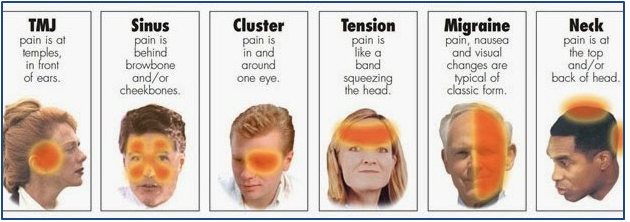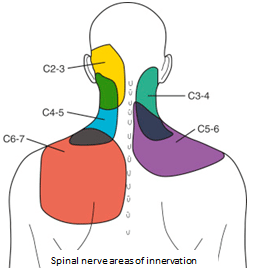Post by Mal Fayers, B Phty APAM
This week is Migraine Awareness Week in Australia.
Headaches and migraines affect almost five million Australian’s each year. Migraines alone cost the economy $35.7 billion in 2018. Not to mention, they are painful, inconvenient, and can last for days at a time. 71% of the five million migraine sufferers are female (more than a quarter of all Australian women) and 86% are aged 15-65.
Typically, different types of headaches will elicit different symptoms. Below is a guide to the types of headache you may experience.

(http://healthhelix.in/types-of-headache-and-their-treatment/)
Migraine, tension, and neck (cervicogenic) headaches are the most prevalent in Australia.
Of the three, migraines are the most severe, lasting up to four days from onset. Migraine headaches are characterized by severe throbbing or pulsating on one side of the head, sometimes into one eye. Migraine sufferers may also become sensitive to light, sound, and smell, and migraines are often preceded by changes in sensation, called aura, such as flashing light or seeing stars. Neck pain and stiffness is another common symptom experienced by migraineurs. Differences in neck posture, pronounced muscular tenderness, and the presence of trigger points are all commonly observed in those who experience migraine. Triggers such as hunger, dehydration, and stress, all play a part in causing migraine.

Cervicogenic headaches present themselves similarly to migraine headaches, making them hard to differentiate. These headaches are often preceded by neck pain and stiffness, as the cause of pain is referred from bony or soft tissue structures in the neck. A cervicogenic symptom checklist has been developed with a set of criteria (See below). However, without the use of neural blocks, it is difficult to distinguish between migraine and cervicogenic headaches.

Both migraine and cervicogenic headaches are contributed to by the upper neck joints and muscles. The C2/3 joint is particularly important, as the sensory fibres of the upper cervical nerves converge with the trigeminal nerve (which gives sensation to the face) and a branch of the C5 spinal nerve. Given the merger of these nerves, it is possible to feel the pain in any part of the head, neck
Tension headaches, on the other hand, affect both sides of the head. They are most often described as feeling like a band is tightening around the head. Research suggests that musculoskeletal causes, as well as triggers such as stress, are the most common causes of tension headaches. It is important for those who experience tension headaches to identify any triggers (like lifestyle stressors or tension in the neck and shoulder muscles) and potential contributors (such as ergonomic setup causing poor posture) in order to help avoid recurrence. It is possible to have a migraine and tension headache at the same time, and symptoms can overlap., and face that they innervate, leading to the vast array of severe symptoms these headaches produce. As such, it is important for this joint to be able to function properly. Poor posture and tight muscles, for example, are two factors that play a part in joint dysfunction in the cervical spine.
Physiotherapy can provide effective assistance to most headache types, including migraine, tension headache, and cervicogenic headache. Your physio can help identify the type of headache you are experiencing, and the muscular and skeletal contributors to your condition. Common contributors are upper neck joint dysfunction, knots or trigger points in muscles of the neck and shoulders, poor posture, weakness of shoulder girdle muscles, and skeletal imbalances. Once your contributors are identified, your physio can help you implement the best treatment, self-help, and exercise processes to significantly assist you with your headaches.
The RHP Physiotherapy methodology and assessment/treatment processes are extremely valuable for headache sufferers and assist with sustained improvements in headache frequency and severity. For appointments or more information call RHP Physiotherapy at our Kelvin Grove clinic on (07) 3856 5566, or our Nathan clinic on (07) 3184 6844.
